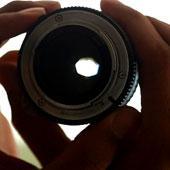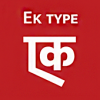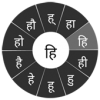
Exposure, Aperture and Depth of Field
- Introduction
- Aperture
- Aperture Settings and Aesthetic effect
- Video
Photography is an art where digital technology is involved.
The course aims at teaching a self motivated person the art and science of photography using a DSLR camera.
The course has the following topics.
1) Exposure
2) Aperture and Depth of Field
Objectives:
The course teaches the concept behind controls on a DSLR camera and production of professional quality images. It also introduces the terms used in professional photography.
Introduction:
Since its invention photography is one of the most popular hobbies of our times. As a visual communication tool it has immense potential to convey an idea through a moment frozen in time. Advancement in digital technology, easy accessibility to high quality and affordable cameras and the presence of cameras in personal gadgets like mobile phones has increased its popularity.



Picture A Picture B Picture C
• Picture A is too bright and is called an overexposed picture.
• Picture B is too dark and is called an underexposed picture.
• Picture C is neither too bright nor too dark and is normally exposed.
In this chapter we are trying to achieve a normally exposed picture by controlling the aperture, shutter speed and ISO.
You may have noticed that when you enter a dark cinema hall, at first it is unable to see anything around and slowly surroundings become visible.
When the intensity of the light falling on the eye increases, the diameter of the pupil is reduced and when the intensity is reduced the diameter of the pupil increases. This is a natural mechanism of the eye to control the light falling on the retina. In a similar fashion the light falling on the image capturing sensor can be controlled in a camera by a comparable mechanism called aperture.
When we increase the diameter of the aperture more light falls on the sensor and when we reduce the aperture lesser light falls on the sensor.
Opening of the aperture is represented by F-number or F-stop number.
Following are the F-stop numbers.
f/1, f/1.4, f/2, f/2.8, f/4, f/5.6, f/8, f/11, f/16, f/22, f/32, f/45, f/64, f/90, f/128

Refer the picture.

The subject is in focus and the blurred background separates it and invites our attention to the person. The magical blur in the background is called Bokeh. The blurriness increases as we open up the aperture.
• Case A:
Here in this photograph below, the focus extends from the front of the face to the back of the head. This distance between point A and B is called depth of field.

The subject in the middle is in focus and the subjects in the front and at the back are not. The picture is taken at an F stop number F 1.4 which gives a very shallow depth of field.

Depth of field at F 1.4
• Case B:
In this picture the subject in the foreground and in the background both are in focus. So the depth of field has increased in this case making both subjects in focus. This picture is taken at a depth of field of F/16 that is at a small aperture which will increase the depth of field.


Depth of field at F16
Hence Aperture helps to control the light entering the camera to achieve a normal exposure. It also helps to change the look of the image aesthetically.
Participants:
Documentation and Content by:Krishand R. K. IDC, IIT Bombay
Content Creation and Research Guide:Professor Sudesh Balan, IIT Bombay
Sound Design Editing and Mixing:Shantanu YennemadiNarration:Deepanwita Gosh
Cinematography:Professor Sudesh Balan, IIT Bombay
Storyboard and Screenplay:Krishand R.K
Shooting Assistants:Zulfiya Hamzaki
Shubhangi Salinkar
Manisha Swarnkar



